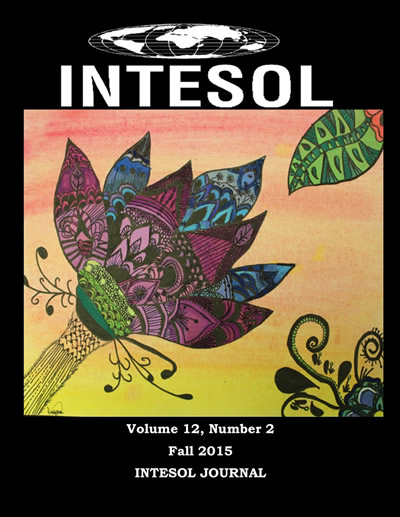Translingual Writing: From Process to Product? Globalizing Written English in the Second Language Writing Classroom
Abstract
Many universities are engaged in efforts to internationalize which will lead to increasing nubers of international students and faculty, thus growing the number of language contact zones within the university. It is in composition and second language writing (SLW), classrooms where the influence of internationalization efforts are often most visible, where traditional teaching practices and pedagogies in standard written English (SWE) at times insufficiently address language issues. A growing theoretical movement is nudging the SWE hegemony aside in favor of translingualism—an attempt to welcome other language structures into the classroom. For second language writing (SLW) programs, this movement poses some interesting challenges.References
ACE, A. C. o. E. (2014). Campus Internationalization. Retrieved November 21, 2014, from http://www.acenet.edu/higher-education/topics/Pages/Campus-Internationalization.aspx
Atkinson, D., Crusan, D., Matsuda, P. K., Ortmeier-Hooper, C., Ruecker, T., Simpson, S., & Tardy, C. (2015). Clarifying the Relationship between L2 Writing and Translingual Writing: An Open Letter to Writing Studies Editors and Organization Leaders. Manuscript submitted for Publication.
Canagarajah, S. (2011). Writing to learn and learning to write by shuttling between languages. Learningto-write and writing-to-learn in an additional language, 111-132.
Dudley-Evans, T., & St. John, M. J. (1998). Developments in English for specific purposes: A multi-disciplinary approach: Cambridge university press.
Elbow, P. (1999). Inviting the Mother Tongue: Beyond" Mistakes,"" Bad English," and" Wrong Language". JAC, 359-388.
Ferris, D. (2014). Review: "English Only" and Multilingualism in Composition Studies: Policy, Philosophy, and Practice. College English, 77, 73-83.
Ferris, D., & Hedgcock, J. (2014). Teaching L2 Composition: Purpose, Process, and Practice. New York: Routledge.
Hinds, J. (1987). Reader versus writer responsibility: A new typology. In T. Silva & P. K. Matsuda (Eds.), Landmark essays on ESL writing. New York, NY: Routledge.
Horner, B., Lu, M.-Z., Royster, J. J., & Trimbur, J. (2011). Opinion: Language difference in writing: Toward a translingual approach. College English, 73(3), 303-321.
Huang, T.-C. (2010). The Application of Translingualism to Language Revitalisation in Taiwan. Asian Social Science, 6(2), P44.
Hyland, K. (2003). Second language writing: Ernst Klett Sprachen.
Kachru, B. B. (2006). The English Language in the outer circle. In K. Bolton & B. B. Kachru (Eds.), World Englishes: Critical Concepts in Linguistics: Routledge.
Kellman, S. G. (1991). Translingualism and the Literary Imagination. Criticism, 33(4), 527-541.
Lu, M.-Z. (1994). Professing multiculturalism: The politics of style in the contact zone. College composition and communication, 442-458.
Lu, M.-Z., & Horner, B. (2013). Translingual literacy and matters of agency. In A. S. Canagarajah (Ed.), Literacy as Translingual Practice: Between Communities and Classrooms (pp. 26-38). New York, NY: Routledge.
Matsuda, P. K. (2011). International and U.S. Resident ESL Writers Cannot Be Taught int he Same Class. In J. Reid (Ed.), Writing myths: Applying second language research to classroom teaching (Fourth ed.). Ann Arbor: University of Michigan Press.
Matsuda, P. K. (2013). It's the wild west out there. In A. S. Canagarajah (Ed.), Literacy as Translingual Practice: Between Communities and Classrooms (pp. 128-138). New York, NY: Routledge.
Matsuda, P. K. (2014). The Lure of Translingual Writing. PMLA, 129(3), 478-483.
McCrimmon, J. M. (1984). Writing with a Purpose (8th ed.): Houghton Mifflin Company.
Michael-Luna, S., & Canagarajah, A. S. (2007). Multilingual academic literacies: pedagogical foundations for code meshing in primary and higher education. Journal of Applied Linguistics, 4(1), 55-77. doi: 10.1558/japl.v4i1.55
NCTE. (1974). Students' Right to their Own Language (with bibliography). Retrieved October 1, 2014, from http://www.ncte.org/positions/statements/righttoownlanguage
NCTE. (2009). Statement on Second Language Writing and Writers. Retrieved September 23, 2014, from http://www.ncte.org/cccc/resources/positions/secondlangwriting
Pirsig, R. M. (1974). Zen and the art of motorcycle maintenance. New York: William Morrow and Company: Inc.
Polio, C., & Williams, J. (2009). Teaching and testing writing. The handbook of language teaching, 486-517.
Ray, B. (2013). A Progymnasmata for Our Time: Adapting Classical Exercises to Teach Translingual Style. Rhetoric Review, 32(2), 191-209.


